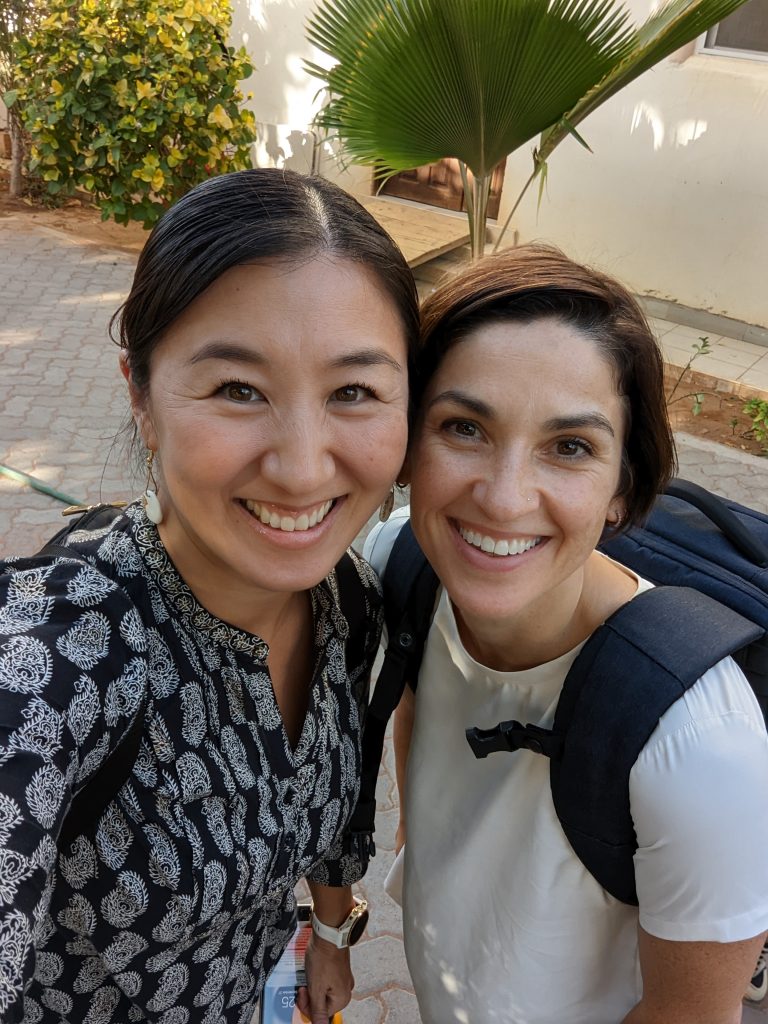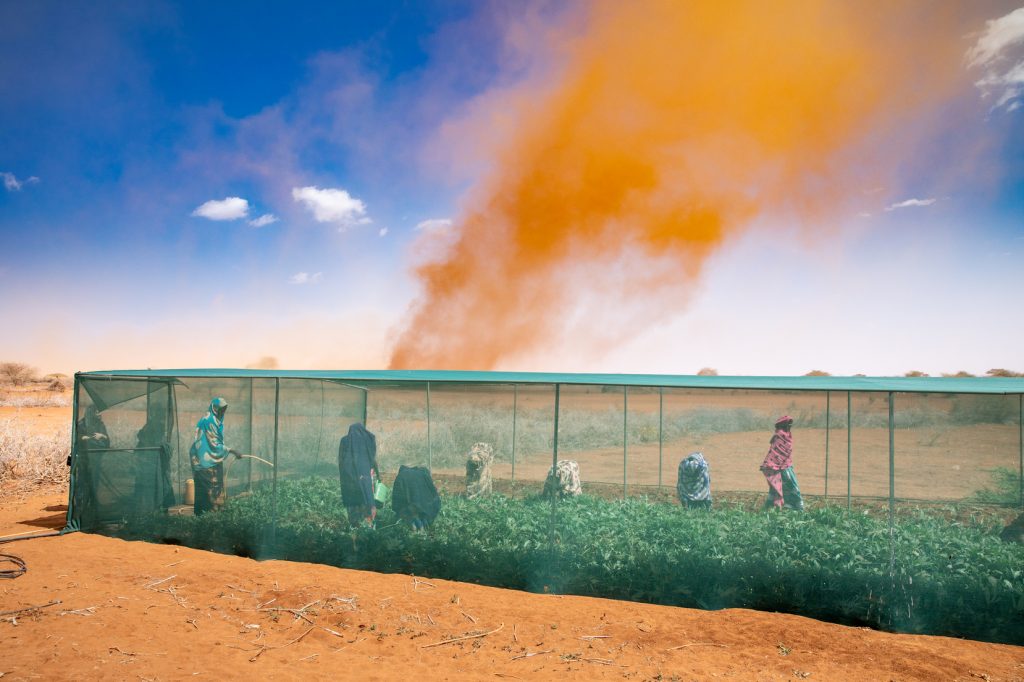Cisco and Mercy Corps recently completed a five-year Technology for Impact partnership centered on delivering humanitarian aid and development assistance faster, better and to more people around the world by accelerating digital solutions. There’s a lot to celebrate and reflect on, especially as we center our energy on our new partnership focused on fostering climate adaptation and resilience in the Horn of Africa.
Below is a conversation I had recently with Carolyn Florey, Senior Director of Mercy Corps’ Technology for Development Team, reflecting on our transformational partnership, and looking forward to what’s next.
Carolyn: Mercy Corps and Cisco have been partnering for 15 years! Our most recent five-year Technology for Impact partnership reached more than 12 million people across 45 countries, and it has also influenced the broader humanitarian and development sector, and Mercy Corps’ capacity as an organization. What results are you most proud of?

Erin: I have loved seeing the programs evolve over the years — from the earliest proof of concepts and pilots, to some initiatives being replicated across other regions and scaled across the organization. The benefit of a multi-year partnership is that it has afforded us the time to test solutions, to pivot and adapt when things don’t go as planned, and to scale initiatives that gained traction and had an impact. In many cases, we have identified new applications and opportunities to apply these solutions to challenges we hadn’t even anticipated at the partnership’s outset. When COVID-19 hit in 2020, for example, we saw how critical technology solutions were to continue supporting vulnerable populations. Mercy Corps was well positioned to respond, leveraging our work building digital communities to deliver trusted and reliable information on COVID-19, and our initiatives to digitize cash and vouchers to deliver cash assistance quicker and more efficiently to those in dire need.
We see our funding as catalytic, so it has been gratifying to see this borne out by our Technology for Impact partnership. Our support has allowed Mercy Corps to invest in its people, tools, and tech-based programming to drive greater efficiency and impact. In doing so, Mercy Corps has been able to demonstrate the value of this support, resulting in greater institutional investment, additional funding and new partnerships that have helped further scale these efforts. It’s incredible to see Cisco-supported technology initiatives now embedded in 116 Mercy Corps programs in 45 countries!
Erin: How about you, Carolyn? Which initiatives do you feel have especially moved the needle for Mercy Corps’ work?
Carolyn: The Technology for Impact partnership was incredibly unique in that it touched everything from operations to innovation. You used the word “catalytic” to describe Cisco’s funding — and it has truly been a catalyst for improving how Mercy Corps operates as an organization. Our monitoring and evaluation (MEL) work is a strong example of this. As humanitarians, we work in very complex and fragile environments. These include communities experiencing conflict from armed groups, acute hunger, and much uncertainty. Program monitoring and evaluating is essential to the success of our work, because it allows us to understand if our programs are creating the intended impact we seek, and truly supporting people in rapidly evolving situations. Digitizing and automating our MEL processes has been a game changer for our program teams, allowing us to have a richer, more complete understanding of our programs’ impact much faster.
Carolyn: In what ways are you hoping to see the partnership build on its successes and learnings as we focus on one of the most pressing issues we collectively face: climate change?
Erin: I believe there is a direct link between climate change and humanitarian crises. We know that communities in low-income countries are disproportionately affected by climate change and lack the resources to adapt and respond to an increasing number of crises that can be exacerbated by climate change, such as floods and drought. Mercy Corps’ new 10-year Pathway to Possibility strategy, centered around building resilient communities, resonated with Cisco and mirrored our increased focus on addressing climate change and building resilience.
Mercy Corps works on some of today’s toughest challenges, with communities that are at the forefront of the climate crisis. Over the course of our Technology for Impact partnership, Mercy Corps has tested, adapted, and applied innovative technology solutions to improve the way they deliver aid. It therefore made sense that we expanded our partnership, building on what we’ve learned and developed, and see how we can apply this approach and technology to help communities adapt and build resilience to their changing environments. I’m hoping that, as with our Technology for Impact partnership, we will be able to leverage the activities and technologies from our work in the Horn of Africa, and apply these to other regions and communities similarly affected by climate change.

Erin: Carolyn, I’d love to hear your perspective on this. How do you see technology playing a role in Mercy Corps’ climate resilience work?
Carolyn: There are multiple ways our existing work can be expanded and adapted to build climate resilience. For example, we can combine digital cash payments with our crisis analysis work to make automatic payments in advance of severe weather. We can provide digital early warning alerts before these crises occur, and also digital information afterwards so that the communities we work with have the information they need to access services and support. Technology opens the door for us to build and achieve climate resilience from multiple angles, many of which are already reflected in our work.
In Kenya, through our new partnership with Cisco, we are increasing the uptake and use of digital information services and tools among key decision-makers so they can make data-informed decisions to combat the effects of climate change — which in Kenya, looks like severe drought. We see potential in scaling this approach to the broader Horn of Africa region and beyond.

Carolyn: We recently had the opportunity to visit Wajir, Kenya together and see some of our climate adaptation programming in action. What were some highlights of that experience for you?
Erin: The highlight of these visits is always meeting the people: the local Mercy Corps team, their government and community partners, and probably most important, the agropastoralists, whose lives and livelihoods are most impacted by climate change. It was incredibly moving to see the drought firsthand, and to listen to the stories and perspectives of those affected. While in some ways disheartening, it was also inspiring to see the many ways in which Mercy Corps is partnering with these communities to adapt to their changing environment, and innovate to improve their livelihoods.
Another highlight (for the experience, not necessarily the taste): trying warm camel milk, a Wajir staple!
Carolyn: Combating climate change might be the most important challenge of our lifetime, and one that obviously can’t be solved by one organization alone. How is Cisco addressing climate change? What role do you think these partnerships play in tackling global issues?
Erin: Cisco’s purpose is to “Power an Inclusive Future for All” — and that also means by and with all. Collaboration with partners large and small, global and local, has always been part of our approach to driving lasting and systemic change. One area where Cisco has the potential to make a meaningful impact is with our customers. How can we help them use our products and solutions to reduce their environmental footprint and achieve their sustainability goals? We are working to reduce the energy consumption of our products, and build them using circular design principles that can extend their life cycle and reduce the amount of materials they require. But beyond that, we will continue to look at how we can continue to partner with organizations like Mercy Corps — because we have seen that when we combine the strength of the humanitarian sector’s expertise with our core competencies in technology and connectivity, we can have a deeper and longer-lasting impact.
Note: Photos courtesy of Mercy Corps


Thank you for sharing this story. It is wonderful to hear the difference Cisco & technology is making to the low income countries. Joining hands takes the impact so much more further than one organization. I would be interested to know what opportunities are available for volunteering on such projects?
Cisco and Mercy Corps are collaborating to help communities in Kenya adapt to climate change and build their resilience. Our partnership is focused on enhancing access to clean water, improved agricultural production, and the development of sustainable energy sources for the most vulnerable populations.